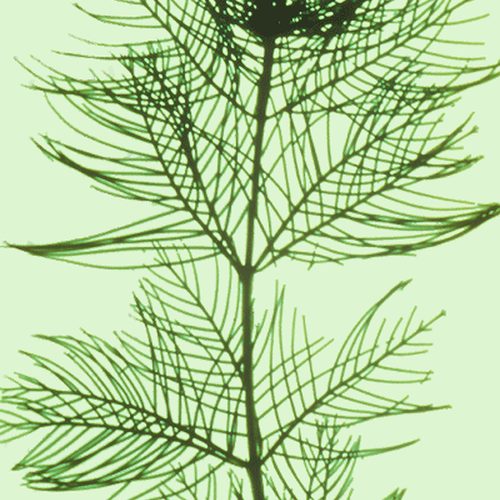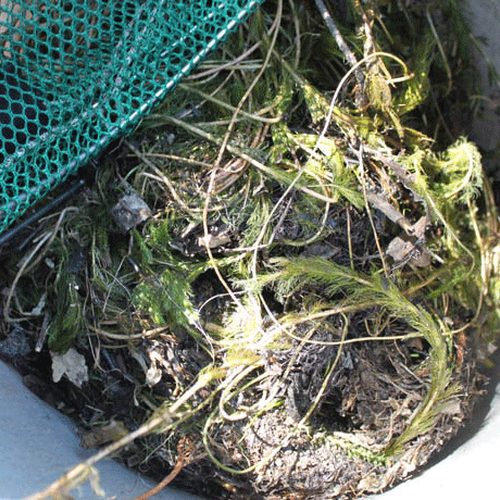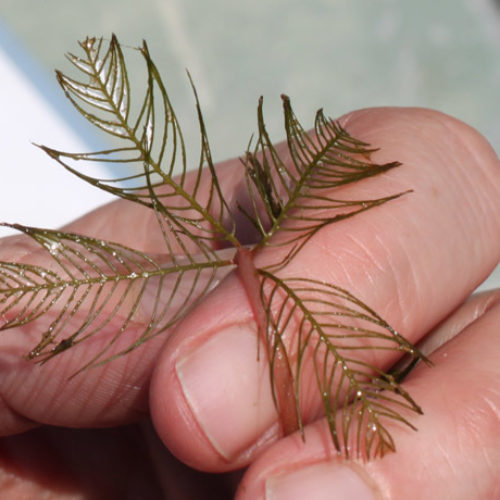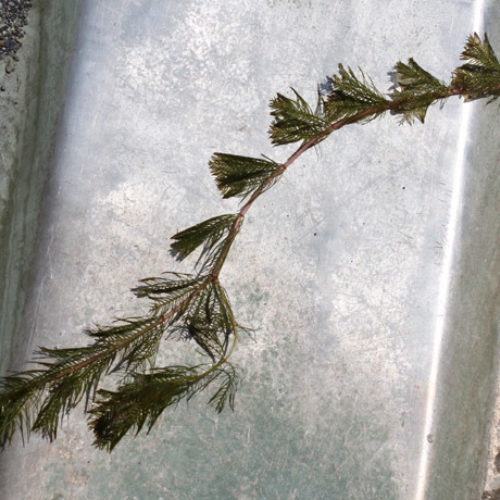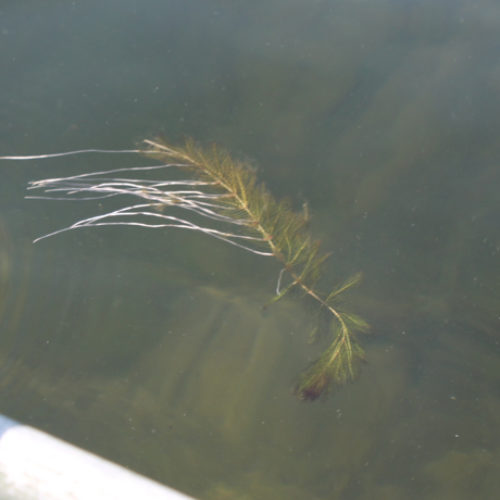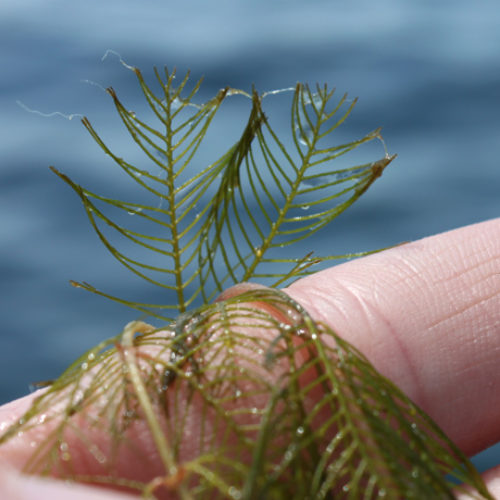Eurasian Watermilfoil
Myriophyllum spicatum
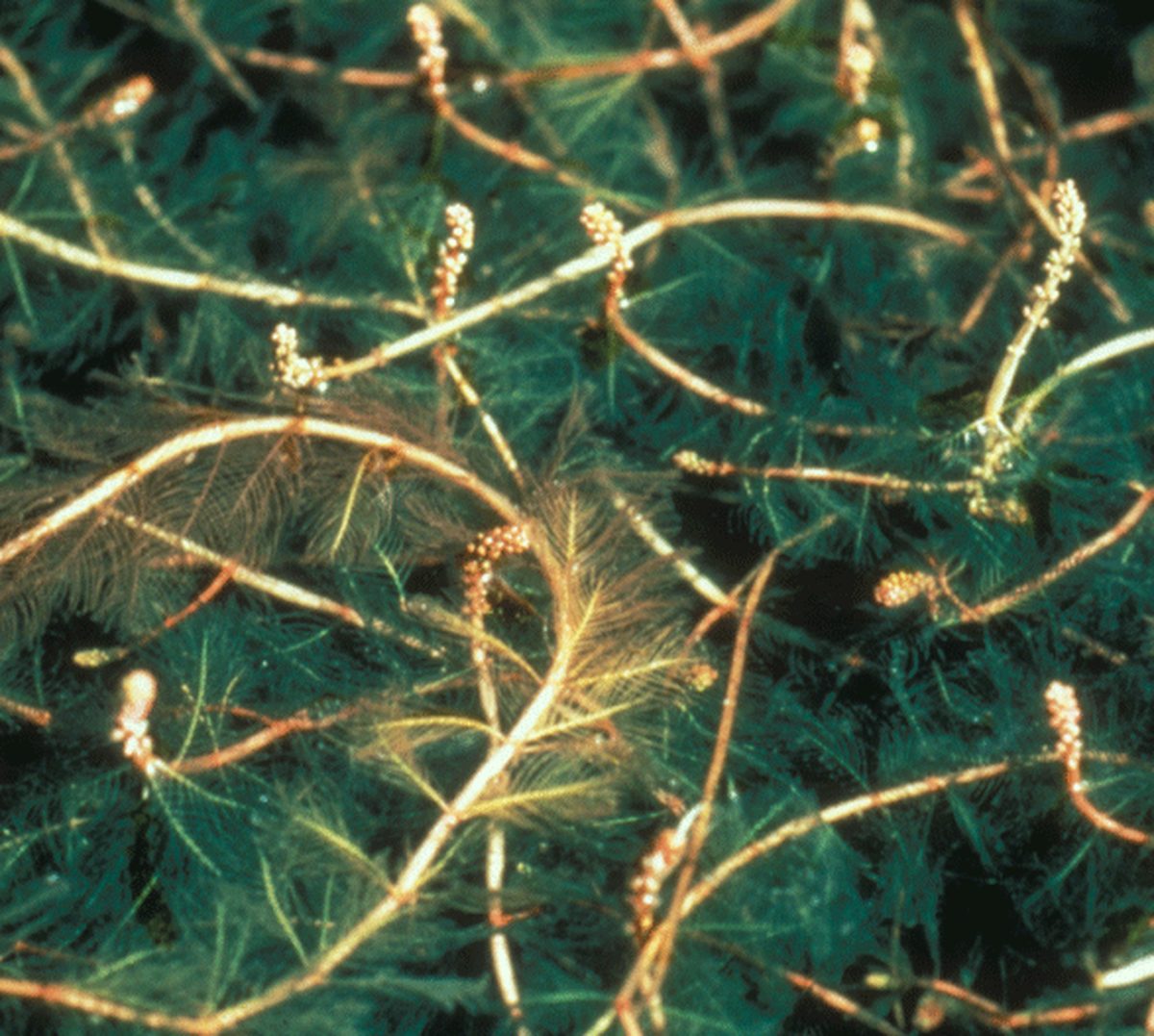
Family: Haloragaceae
Other Common Names: spike watermilfoil
Weed class: B
Year Listed: 1988
Native to: Europe, Asia and Northern Africa
Is this Weed Toxic?:
not known to be
Legal listings:
This plant is also on the Washington State quarantine list. It is prohibited to transport, buy, sell, offer for sale, or distribute plants or plant parts of quarantined species into or within the state of Washington or to sell, offer for sale, or distribute seed packets of seed, flower seed blends, or wildflower mixes of quarantined species into or within the state of Washington. Please see WAC 16-752 for more information on the quarantine list. For questions about the quarantine list, contact the Washington State Department of Agriculture's Plant Services Program at (360) 902-1874 or email PlantServices@agr.wa.gov.
Why Is It a Noxious Weed?
It is an ornamental aquatic plant that has escaped cultivation. Infestations can alter aquatic ecosystems. It forms dense mats that shade out other aquatic plants, degrades water quality, inhibits water flow and impacts recreational activities.
How would I identify it?
General Description
Eurasian watermilfoil is a perennial, submersed, aquatic plant with dissected leaves. It forms dense mats with flowering stems extending above the water’s surface. There is a land form of the plant that has smaller, stiffer leaves
Flower Description
Flowers are tiny, pinkish and occur on reddish spikes. Male and female flowers are on the same plant.
Leaf description
Leaves are finely dissected and occur in whorls of 4 (rarely 5). Each leaf has 12 or more leaflet pairs (sometimes down to 5 pairs of leaflets). Leaves have a feather-like appearance.
Stem description
Stem tips are tassel-like and often red. They mostly branch near the water's surface. Stems easily fragment.
Fruit Seed Description
Seeds detach from plant, float and then sink if still in water.
Where does it grow?
It is highly adaptable and is found in streams, ponds, lakes and ditches. Please click here to see a county level distribution map of Eurasian watermilfoil in Washington.
How Does it Reproduce?
Eurasian watermilfoil spreads mainly by stem fragments.
How Do I Control It?
General Control Strategy
Eurasian watermilfoil control can be difficult. Since it spreads by stem fragments, care must be taken to ensure the entire plant is removed when mechanical methods or hand pulling is used.
Mechanical Control
Mechanical control is not advised unless the area is entirely invaded by plants. Otherwise, mechanical methods may increase the infestation. Hand pulling may be employed, but the entire plant must be removed or it will re-sprout.
Cultural Control
Bottom barrier - Covering patches of Eurasian watermilfoil with geotextile fabric or other similar woven material can be an effective control method. Make sure to maintain the barrier to prevent establishment of plants on top of the barrier and from gas being trapped beneath the barrier.
Drawdown - Water level reduction to expose plant beds to extended drying or freezing can be an effective Eurasian watermilfoil control method. Winter drawdown is the most commonly used method, and will kill existing watermilfoil so long as the plants and roots freeze.
Biological Control
The milfoil weevil, Euhrychiopsis lecontei, while native to the United States, is the most promising insect found to use as a biocontrol on Eurasian watermilfoil. Because the insects known to control Eurasian watermilfoil are naturally occurring, and because rearing them is time consuming and sometimes difficult, and there is no local source to purchase them at this time, their natural dispersion is relied on to aid with control.
Triploid grass carp are a non-host specific biocontrol alternative. However, these fish do not prefer Eurasian watermilfoil over native species, so will typically eat the native plants prior to Eurasian watermilfoil, and are not recommended for Eurasian watermilfoil control.
Herbicide Control
Use of pesticides in water is regulated in Washington State. All applicators must have an aquatic endorsement on their pesticide applicators license, which is issued by the Washington Department of Agriculture. In addition, coverage under a permit issued by the Department of Ecology is required. See http://www.ecy.wa.gov/programs/wq/pesticides/index.html for details or contact your county noxious weed coordinator.
For More Information
See our Written Findings for more information about Eurasian watermilfoil (Myriophyllum spicatum).
Asotin County NWCB Fact Sheet on Eurasian watermilfoil
Clallam County NWCB Fact Sheet on Eurasian watermilfoil
Jefferson County NWCB Fact Sheet on Eurasian watermilfoil
Lincoln County NWCB Fact Sheet on Eurasian watermilfoil
Whatcom County NWCB Fact Sheet on Eurasian watermilfoil
Control Options for variable-leaf milfoil and Eurasian watermilfoil from King County NWCB



